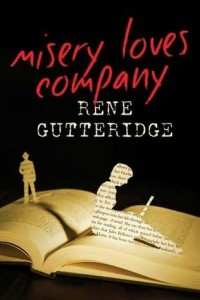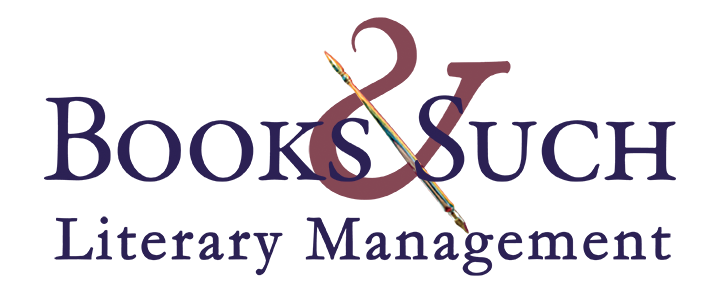Blogger: Rachel Kent
Author Rene Gutteridge’s novel, Misery Loves Company, has a clever Chapter 17. It discusses how manuscripts often sag around Chapter 17 and indirectly warns writers to be cautious when they come to this place when writing a book.
The sagging middle is a common flaw in manuscripts that come across my desk at Books & Such, so Rene’s observation is spot on. I think many authors have a really good idea of how a story is going to start and end when they brainstorm a book, but the middle isn’t as thought out; so when the author gets to about Chapter 17, things fall apart. Connecting the beginning and end begins to look impossible.
How can you prevent a saggy middle in your manuscript? I suggest, when you are approaching what you’d guess is the beginning of the middle of your book, that you stop writing and plot out how you are going to create that middle section to connect beginning and end. Don’t rush forward to try to finish. Take your time, discuss plot ideas with critique partners, and run ideas by test readers to make sure the plan for your middle is detailed and interesting. Consider scheduling enough time in your writing plan so that you can devote more energy to the middle than other sections of your book. That way you can be sure to have time to get that feedback from others. This may seem like a waste at first but ultimately should save agonizing over that slumping middle it comes to rewrites.
Have you ever struggled with writing the middle of your manuscript?

I haven’t had much of a problem with a sagging middle, but that may be because I get the overall plot, then I write the beginning, the ending, and the major points of sharp conflict and genuine crisis in between. Then I go back and write the rest, but some of the sections I’ve already written might change if the new work requires it for consistency or greater emotional impact.
*I do think writing the intermediate conflict and crisis points early in the process helps keep the middle from sagging. It leaves a shorter span for anything to start to droop, and it prevents it drooping too much before the reader hits the next thing that should be exciting.
Thus writing reflects life–starts and ends with lots of attention, but there’s a lot boring stuff mingled in the middle. Can I edit the boredom out of my week?
* I write non-fiction, my WIP has only nine chapters. And still . . .
* Redundant.
* This is going nowhere.
* Boring!
(I’m wearing the paint off that key)
DELETE key
Ahh, I see Shirlee has kind of answered my question below. As a non-fiction writer, we can wrestle with the same soggy middle.
I was taught to use the orbital mechanics model. If you’re going to the moon, you have to provide a push from Earth until reaching the moon’s sphere of gravitational influence, where the moon starts pulling you in.
* Same thing in a story; the beginning pushes the action to a certain point and then the ending pulls it in at an ever-increasing speed.
Love this comparison, Andrew!
Thanks, Emma! I think this may be an instance were a pantster has an advantage over a plotter; the pantster will start strong on inspiration – the ‘push’ – and at some point will see the necessary an fulfilling end and will race to it, being pulled in by the ending’s gravity.
Is this true for non-fiction as well? I suppose it could be.
That’s right where I’m at! Thanks for the suggestion. 🙂
So, young teen males aren’t the only ones who sometimes sag around the middle? (Sorry, couldn’t resist! 😉 )
Gravity is an unavoidable force in the universe. We can’t expect to successfully resist it forever.
I’m bent on reaching escape velocity.
I see what you mean. I lead a ladies’ book dinner group, which means I pick most of the books. The five of us have been meeting 14 years, and we read only Christian books, mostly nonfiction. I’ve noticed that books without a strong start to finish will be left unfinished about two-thirds through by some of the ladies. They won’t slog along waiting for it to pick up. They become bored and then dissatisfied. It becomes a challenge for me to select books that aren’t toooo meaty, interesting, and fluid. Thanks for reminding us to beef up the middle with the same intensity as we plan the beginning and ending.
An author friend of mine taught me to use the “ring composition” model (also called chiastic or spiral), where the middle is actually the key hinge point. It’s a strategy that has been used by authors all the way from Homer to J.K. Rowling. If you start with a strong midpoint, you won’t get lost in the woods, wondering which way to go!
The middle of the first novel I wrote suffered from sagging. By that time, there was so much going on it was almost hard to keep straight. That’s when I finally decided an outline was in order (even if I really am a pantser).
One of the things I started doing with elementary school workshops (disclaimer: not my idea) was have the kids began a story by writing a scene from the middle. Then we wrote two scenes after it and two before it to complete a short story. I’m planning on using that process with my next book, so we’ll see how it goes.
With the two novels I’ve written, I really watched to keep the middle from sagging. Something exciting has to happen. That’s major thanks to this website. 🙂 And I plot that middle.
One of my husband’s favorite authors talks about writing toward “The Big Middle” He has this big showdown in the middle of his book and the beginning is heading toward that and then when the big middle ends the protagonist has gotten that last piece of vital info that will inevitably lead the hero to the final confrontation. Supposedly, the big middle is either a false victory or a false defeat. Some of this author’s most memorable moments happen in the big middle, the epic battles between vampire factions or armies of zombies. That kind of thing. But I imagine that if an author delves deep into the emotion of the character, they can make a big middle with literary or romance as well. This has been helpful in my writing, to actually be writing toward something in the middle rather than just the end.
No one mentioned James Scott Bell’ s “Write your novel from the middle”. It’s a big help to avoid the mid-book slump.
Ashby, Fox & Wilks seem on point.
Bob Mayer’ s advice helped me pump up the middle a couple times.
This was really helpful. I’m not yet at my middle, but these were use ful tips.